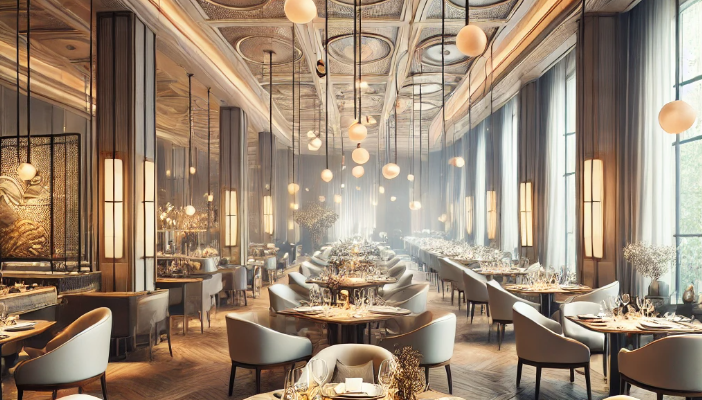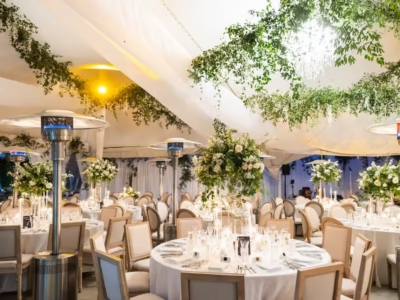Introduction
In the world of haute cuisine, the coveted 3 Michelin Star Restaurant rating is the epitome of culinary excellence. Yet, what sets these elite establishments apart extends beyond the kitchen. The design and ambiance of a 3 Star Michelin restaurant are integral to the overall dining experience, creating an atmosphere that elevates the art of dining to new heights. This detailed exploration delves into the architectural elements, design philosophies, and cultural influences that shape the ambiance of these gastronomic temples.
The Importance of Ambiance
Creating an Emotional Connection
Ambiance is the unseen but deeply felt aspect of any dining experience. In 3 Star Michelin restaurants, ambiance is carefully curated to create an emotional connection with diners. The lighting, music, and overall aesthetic are designed to evoke specific emotions, whether it be tranquility, excitement, or nostalgia. This emotional backdrop enhances the sensory experience of the meal, making each visit memorable.
Enhancing Culinary Artistry
The design of the dining space is crucial in highlighting the culinary artistry on display. The layout, table settings, and even the color scheme are chosen to complement and enhance the presentation of the food. This synergy between environment and cuisine ensures that the dining experience is cohesive and immersive.
Elements of Design in 3 Star Michelin Restaurants
Architecture and Space
Open Layouts and Flow
The architecture of a 3 Star Michelin restaurant often features open, spacious layouts that promote an unobstructed flow of movement and interaction. High ceilings and expansive windows contribute to a sense of openness and grandeur. The spatial design allows diners to feel a sense of freedom and comfort while maintaining an intimate atmosphere.
Private Dining Areas
Many Michelin-starred restaurants include private dining rooms or secluded areas that offer an exclusive experience for guests seeking privacy. These spaces are designed with the same meticulous attention to detail, ensuring a consistent level of luxury and comfort.
Lighting
Ambient Lighting
Ambient lighting is used to create a warm and inviting atmosphere. Soft, diffused lighting sources, such as chandeliers, pendant lights, and wall sconces, are commonly used to bathe the dining area in a gentle glow. This type of lighting helps to create an intimate and relaxed ambiance, perfect for leisurely dining.
Accent Lighting
Accent lighting is strategically placed to highlight specific features of the restaurant, such as artwork, architectural details, or the plating of dishes. This type of lighting draws attention to the craftsmanship and artistic elements, enhancing the visual appeal of the space and the food.
Materials and Textures
Luxurious Materials
The use of high-quality materials is a hallmark of 3 Star Michelin restaurant design. From marble countertops to polished wood floors and fine leather upholstery, every material is chosen for its aesthetic appeal and durability. These materials not only add to the luxurious feel of the restaurant but also contribute to a sensory experience that extends beyond taste.
Tactile Textures
Textures play a crucial role in creating a rich sensory environment. The contrast between smooth, sleek surfaces and rough, organic textures adds depth and interest to the interior design. Elements such as textured wall coverings, intricate fabrics, and artisanal ceramics provide tactile pleasure and visual intrigue.
The Role of Cultural Influences
Local Artistry and Craftsmanship
Celebrating Local Heritage
Incorporating local artistry and craftsmanship into the design of a Michelin-starred restaurant not only adds unique character but also pays homage to the cultural heritage of the region. This can be seen in custom-made furniture, locally sourced materials, and artwork created by regional artists. By integrating these elements, restaurants create a sense of place and authenticity that resonates with diners.
Thematic and Seasonal Décor
Evolving Ambiance
Some 3 Star Michelin restaurants embrace thematic and seasonal décor to keep the dining experience fresh and engaging. Seasonal changes might be reflected in floral arrangements, table settings, and even the menu presentation. Thematic décor, on the other hand, might celebrate specific cultural events, holidays, or artistic movements, providing a dynamic and ever-changing environment.
Case Studies
El Celler de Can Roca, Spain
Minimalist Aesthetic
El Celler de Can Roca, located in Girona, Spain, is renowned for its innovative approach to both cuisine and design. The restaurant features a minimalist aesthetic with an emphasis on natural elements. The use of glass, wood, and stone creates a harmonious environment that complements the avant-garde cuisine. The design philosophy here is one of simplicity and elegance, allowing the food to take center stage.
Integration with Nature
The restaurant’s design integrates seamlessly with its natural surroundings. Large windows offer views of the garden, blurring the line between indoor and outdoor spaces. This connection to nature is reflected in the dishes, which often incorporate locally sourced ingredients and natural flavors.
The French Laundry, USA
Rustic Elegance
The French Laundry in Yountville, California, offers a quintessentially American dining experience with a touch of rustic elegance. The restaurant’s design incorporates elements of the Napa Valley landscape, with a focus on comfort and understated luxury. The ambiance is relaxed yet refined, making diners feel at home.
Attention to Detail
Every aspect of The French Laundry’s design is carefully considered, from the custom-made furniture to the fine china and crystal glassware. The attention to detail extends to the outdoor spaces, where beautifully manicured gardens provide a serene backdrop for dining.
Osteria Francescana, Italy
Contemporary Art and Tradition
Osteria Francescana in Modena, Italy, combines contemporary art with traditional Italian design. The restaurant’s interior is adorned with modern artworks, providing a stark contrast to the historic architecture of the building. This blend of old and new creates a dynamic and stimulating dining environment.
Storytelling Through Design
Chef Massimo Bottura uses the restaurant’s design to tell a story, with each room representing different aspects of Italian culture and history. This narrative approach enhances the dining experience, making each visit a journey of discovery.
Conclusion
The architecture of taste in 3 Star Michelin restaurants is a testament to the importance of design and ambiance in the culinary world. These establishments go beyond serving extraordinary food; they create a holistic experience where every detail is crafted to perfection. The careful orchestration of space, lighting, materials, and cultural elements transforms dining into an art form, leaving a lasting impression on every guest. Whether through minimalist elegance, rustic charm, or a blend of contemporary and traditional styles, the design of these restaurants plays a crucial role in their success and acclaim.
As diverse as a Luxury RV Rental experience, the ambiance and design in these 3 Star Michelin restaurants provide a unique and memorable journey, ensuring that each visit is as much about the environment as it is about the exquisite food.







Comments